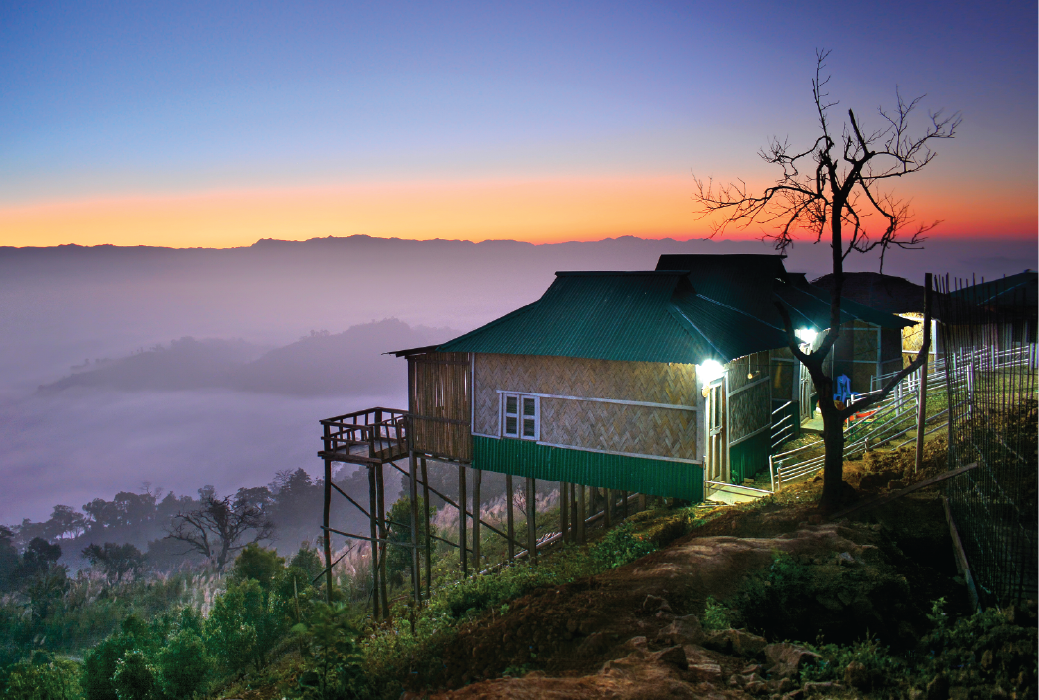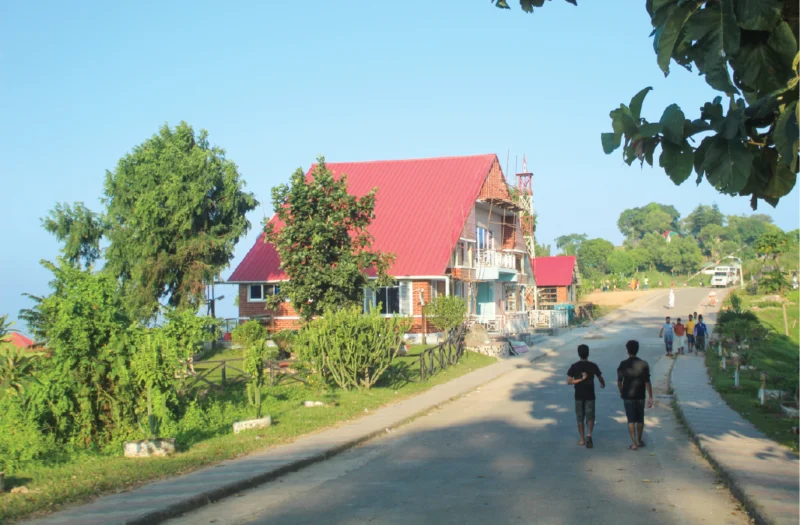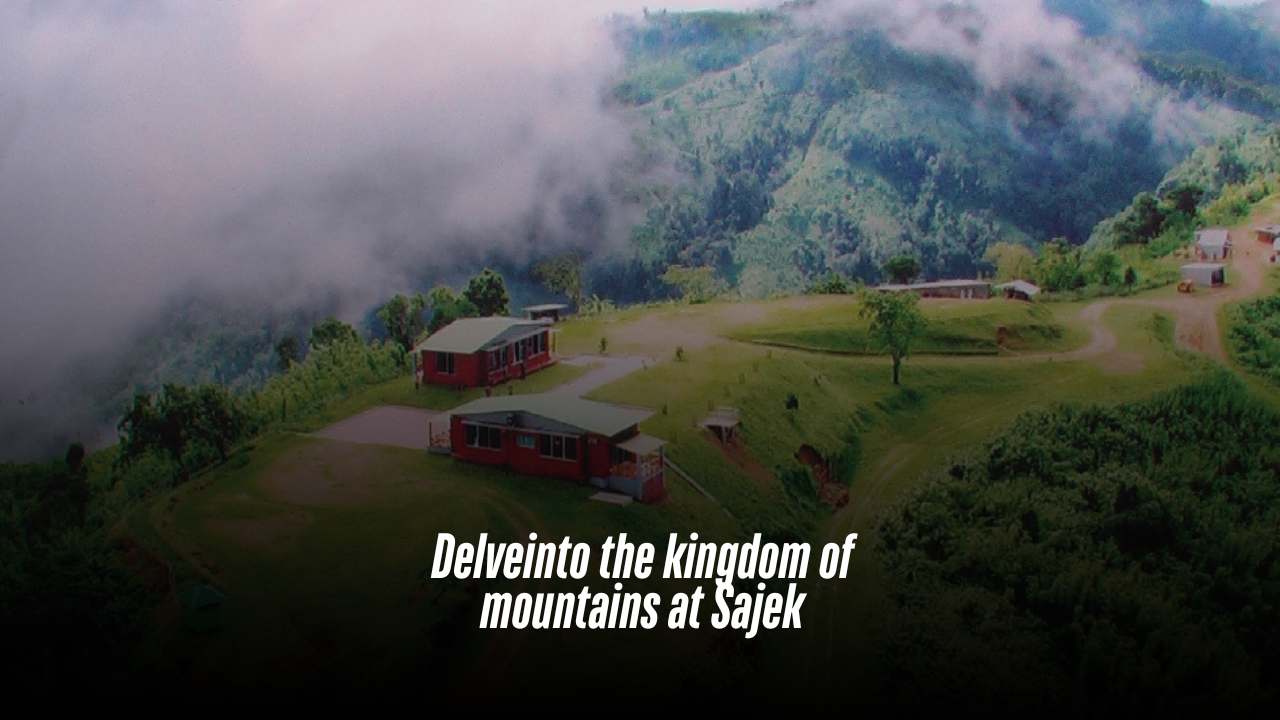
It’s unlikely not to hear of the name Sajek Valley whenever some tourist spot suggestions pop up these days among Hodophiles. Which makes it one of the most popular tourist spots located in the verdant hills of the Kasalong range of mountains amidst the serene and exotic beauty of nature.
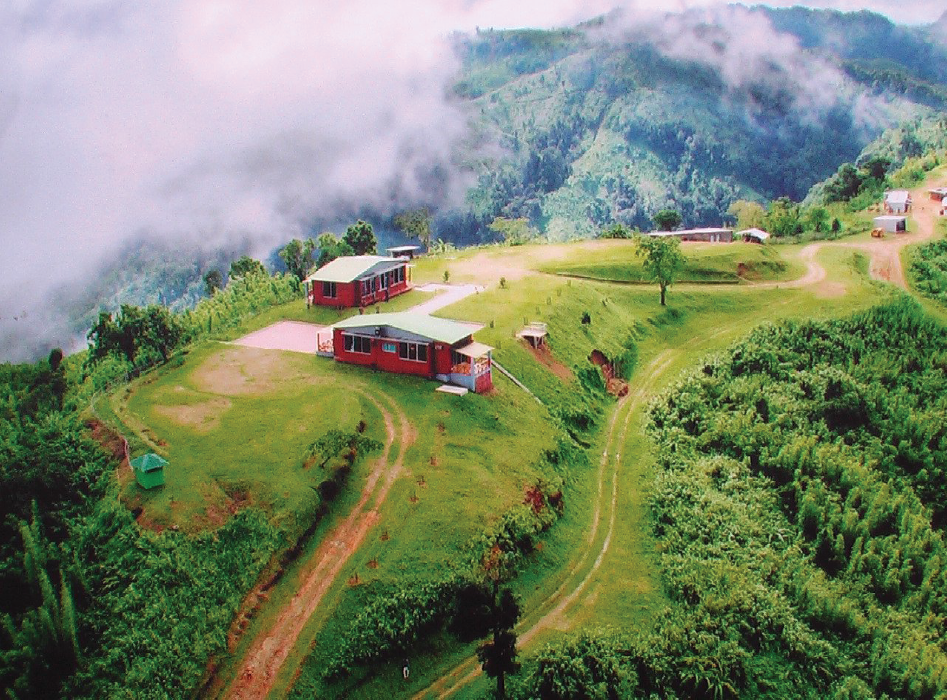
Sajek Valley is often referred to as the “Queen of Hills” and the “Roof of Rangamati,” and it has all the right reasons to be titled so. The valley is characterized by lofty mountains, thick forests, expansive grasslands, and miles of winding roads. The Mayni River and Mayni Range must be crossed in order to reach the Sajek Valley. Located in the Baghaichori Upazila of the Rangamati Hill District, the Sajek River, also called the Kasalong River, is the largest union in Bangladesh and divides Bangladesh from India.
Sajek Valley, which was previously the scene of insurgencies and is now surrounded by the hills of Mizoram to the east and Tripura to the north, represents Bangladesh’s cultural diversity and encourages people of all ethnic backgrounds to develop tourism there for socio economic advancement.
The tribes of the Lusai, Pangkhoa, and Tripura live in Sajek. Here the locals are mostly from Tripura and lusai tribes. The village of Kalank Para, on the last frontier of the Sajak Valley, is inhabited by the Lusai people. Few Chakma also lives nearby. The simple and basic indigenous lifestyle of local people is just fabulous for visitors to spend a good time here.
Sajek is now also willing to assist individuals in their pursuit of benefits, whether it be by assisting them in their tourist endeavors or by involving them in them. This is definitely unusual when considering Bangladesh.
Unmissable
One of the main draws for visitors to Sajek is Konglak Hill. The Lusai community lives in Konglak, the last village in Sajek Valley. From the Konglak Hills, one can witness the origins of the Karnafuli River, the Lusai Hills of India. There is a two-hour journey through Ruilui Para that leads to the Kamalak fountain. This beautiful fountain is also known to many people as Padaam Toisha Jharna or Sikam Toisha Jharna.
Whether it’s day or night, Sajek always appears more like a magnificent piece of art made by an artist. One of the wonderful aspects of Sajek is how nature unfolds here in its best forms. A sleek rainbow can often be noticed coming through the piles of clouds right after a good rain. Tourists especially suggested to not miss the dawn. The white clouds and the sunrise/sunset light create an astounding environment to please both the eyes and soul.
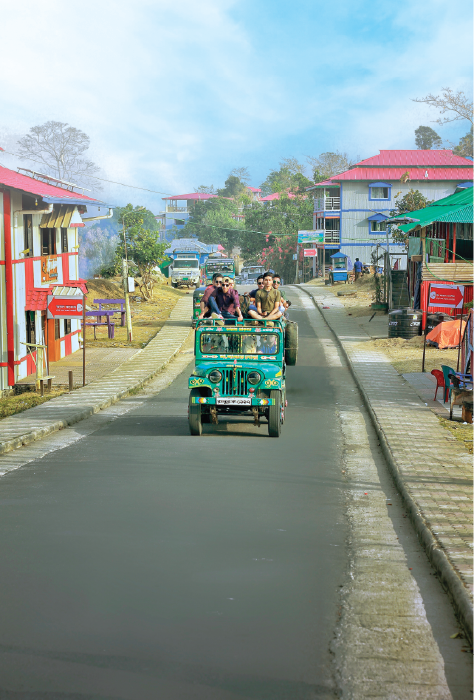
To see the sunrise, visiting the Hollypad early in the morning is highly recommended. The afternoon’s colour of the setting sun from a high point is guaranteed to entice you. Post evening, the sky is mostly covered with a blanket of stars. Upon your return from Sajek Valley, you can also take in the sights of Dighinala Banbihar, Hazachara Jhorna, and the Dighinala hanging bridge.
There are some local 4 wheels drive cars that are used for transportation called Moon Car or Chander Gari. Usually, the moon car has the capacity to carry 10 to 15 passengers. It is claimed that one must try these cars when they visit here. While traveling through the curving hill route to Sajek, a car is suggested be reserved for a hassle-free journey. This place is also considered ideal for trekking.
To have a pleasing time here, staying in resorts is highly recommended, as Sajek offers a variety of high-end resorts that are totally worth a visit. They are designed in such a way that they will ensure an unforgettable trip throughout, along with enjoying the natural essence of the place. And to conclude, the most unmissable thing here is the variety of authentic tribal food, which is impossible to find elsewhere. Most of the cuisines are prepared with rare ethnic ingredients by traditional chefs.
When and how to get there
Sajek is beautiful in all seasons. With the changing of the seasons, it takes on a stunning new hue. So regardless of the season, one can get a new taste of Sajek. But in the rainy season, autumn, and late autumn, you will feel the white clouds more closely. However, the best part of Sajek is the surprise of the weather it has to offer every day. Hence, it’s never a dull moment here.
Although Sajek is located in Rangamati district, the communication system is good through Khagrachari. There is no direct connection from Dhaka to Sajek Valley. However, you can take the train to Feni then take the taxi to Sajek Valley or by bus to Khagrachari from Dhaka and then to Sajek.
Other transportation options including bus is also available for a comfortable journey overall. Alternatively, you can take the bus to Chittagong then take the taxi to Sajek Valley. It takes two to three hours to travel from Khagrachhari to Sajek Valley across the road’s high peaks and falls.
Hence it can be said without a doubt to experience the place’s actual beauty firsthand rather than merely reading and viewing enough evaluations about it.




